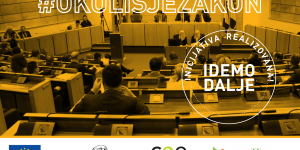On 30 June 2016 the Council and the European Parliament reached a provisional agreement on a directive to reduce emissions of air pollutants. This so-called new NEC Directive sets stricter national limits from 2020 to 2029 and from 2030 onwards.
“With this directive we will combat air pollution, a killer that annually causes over 400 000 premature deaths. The reduction of emissions of certain pollutants will ensure substantial health benefits. I am very pleased that after years of negotiations we were able to reach this agreement on the last day of the Dutch presidency, for all the people in Europe”.
Sharon Dijksma, Dutch Minister for the Environment and president of the Council
The EU is developing new laws to set stricter limits for pollutant emissions.
The aim of this directive is to further address the health risks and environmental impact of air pollution. It is also meant to align EU law with international commitments (following the revision of the Gothenburg Protocol in 2012).
Pollutants
The new directive set national limits for the emissions of five pollutants: sulphur dioxide, nitrogen oxides, non-methane volatile organic compounds, ammonia and fine particulate matter.
National emission limits
The national emission limits for each pollutant from 2020 to 2029 are identical to those to which the member states are already committed in the revised Gothenburg protocol. New stricter reductions from 2030 have now been agreed.
With the new commitments, the health impact of air pollution is estimated to be reduced by about 50% in 2030 (compared to 2005).
Emission levels for 2025
Indicative emission levels for 2025 will be identified for each member state. They will be determined on the basis of a linear trajectory towards the emission limits that will apply from 2030. However, member states will have the possibility to follow a non-linear trajectory if this is more efficient.
If member states deviate from the trajectory planned, they will need to give the reasons and explain the actions they intend to take in order to get back on track.
Flexibility
Some flexibility to comply with the limits is foreseen, under certain circumstances. For instance, if one year a member state cannot fulfil its commitment due to an exceptionally cold winter or dry summer, this country will have the possibility to average out annual emissions with those of the preceding and subsequent year.
Timeline and next steps
The Commission presented its proposal as part of the ‘Air quality package‘ in December 2013. This file follows the ordinary legislative procedure. The European Parliament voted its position on the proposed directive in October 2015. The Council agreed on a general approach in December 2015. This directive needs qualified majority to be adopted by the Council.
In June 2016 a compromise text proposed by the presidency of the Council was supported by Coreper. On 30 June the text was in principle accepted by the European Parliament.
The European Parliament is expected to vote it in the autumn. Then the text will be submitted to the Council for final adoption at first reading.



